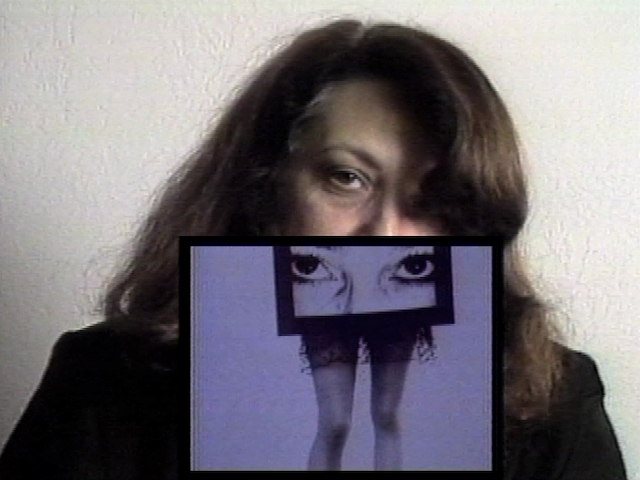Lynn Hershman Leeson
Biography
Since the 1960s, Lynn Hershman Leeson has worked prolifically across media to reveal and intervene on the technological infrastructures of our social world. Using sculpture, film, video, installation, performance, drawing, painting, net art, and experiments with interactive technologies like CCTV and online interfaces, Hershman Leeson repurposes the content and form of mainstream media to provocatively investigate identity, surveillance, and the role of media subcultures in resisting censorship and political oppression. Hershman Leeson has been at the forefront of artistic technological experimentation since her earliest works, incorporating touch screen technology as early as the 1980s, artificially intelligent voice recognition in the early 2000s, and biotechnology throughout the 2010s.
The concept of subjectification is central to Hershman Leeson’s work. The artist frequently uses performance personas and communications technologies, problematizing how media structures our personal identities and interpersonal relationships. A precursor to Hershman Leeson’s ongoing experiments with performative personas, one aspect of her 1972 master’s thesis at San Francisco State University involved writing art criticism under three pseudonyms: Prudence Juris, Herbert Goode and Gay Abandon. Starting in 1973, Hershman Leeson took on the ‘fictional’ identity of San Francisco-based Roberta Breitmore, using makeup, wigs, costuming, and eventually hiring actors to develop her persona. As Roberta, Hershman Leeson procured official documents including a driver’s license, a credit card, and a letter from her psychiatrist, demonstrating how individual identities are systematically produced, verified, and regulated by state institutions.
Hershman Leeson’s artworks routinely pose questions to her audience through direct address and text. By inviting audience participation, Hershman Leeson subverts the top-down design of mass media and provides a structure for open exchange. In Desire Inc. (1990), the artist created and broadcast a series of advertisements in which a paid actress seductively invited viewers to call her. The video pairs the ads with interviews with those who responded, asking why they reached out to the woman on TV, what they were hoping to get from the encounter, and the nature of fantasy more broadly. Hershman Leeson comments throughout on the role of mass communication in consumer culture and broadcast media and advertising’s creation of the woman-as-consumer object.
Hershman Leeson’s work is concerned with veracity, critiquing the constructed objectivity of dominant historical narratives—for instance, the male-dominated art historical canon. Extending her use of the interrogative, Hershman Leeson’s moving image works frequently incorporate documentary-style first-person interviews and archival research to structure their inquiries. The films and videos span topics from the mathematician Lady Ada Lovelace, to Marcel Duchamp’s mechanical art, to the Feminist Art Movement, to the artist Laura Albert’s alter ego JT LeRoy, repeatedly referencing themes of artifice, authenticity, and gendered subjectivity. Hershman Leeson has made both feature films and shorter conceptual video works. Across these forms, her use of speculative fiction and traditional documentary filmmaking points to omissions in mainstream history, rewriting the stories our society accepts as true—particularly surrounding the nature of women and the ambivalent capabilities of technology.
Hershman Leeson has exhibited her work nationally and internationally. Born in Cleveland, Ohio, Hershman Leeson pursued a bachelor’s degree in fine arts and museum administration at Case Western Reserve University in Cleveland, OH, followed by a master in fine arts at San Francisco State University. She has shown in institutions and biennials including the Venice Biennale (2022); The Institute of Contemporary Art, Los Angeles (2022); The Shed, New York (2019); Walker Art Center, Minneapolis (2019); Institute of Contemporary Art Boston (2018); Whitney Museum of American Art (2017); as well as international exhibitions including the Gwangju Biennial, Korea (2021) and Riga Biennial of Contemporary Art (2018). In 2021, her solo exhibition, Twisted, was installed at The New Museum in New York. Her retrospective exhibition, Civic Radar, traveled between Germany and San Francisco from 2014 and 2017. Solo exhibitions of Hershman Leeson’s work have been held at Julia Stoschek Foundation, Dusseldorf (2025); Altman Siegel, San Francisco (2022); bürobasel, Basel (2021); Rozenstraat, Amsterdam(2021); Centro de Arte Dos de Mayo Comunidad de Madrid (2019); KW Institute for Contemporary Art, Berlin (2018); Haus der elektronischen Künste, Basel (2018); Modern Art Oxford, UK (2015); San Francisco Museum of Modern Art (2013), and the Whitworth Art Gallery, Manchester (2007). Her films have screened at the Sundance Film Festival, Toronto Film Festival, and the Berlin International Film Festival, among others.
Hershman Leeson lives and works between San Francisco and New York City.
